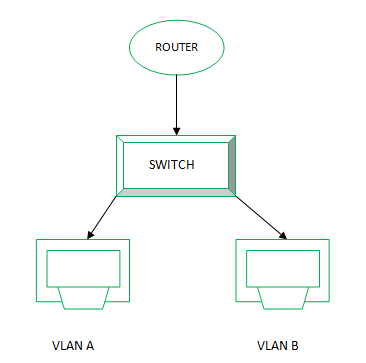VLAN Full Form
Last Updated :
12 Apr, 2020
Virtual Local Area Network, commonly abbreviated as VLAN, is used to provide structure to the increasing number of networks in today’s world. Through this, the network manager can sub-divide a LAN in a logical manner into different broadcast domains.

The IEEE 802.1D-2004 standard played a part in the evolution of Ethernet LANs to VLANs to keep up with the increasing transmission demands. This was made possible through the concept of bridging which divides a single physical LAN into two or more VLANs. Before this, it was impossible to have two systems have the same IP address on the same physical network.
Characteristics of VLAN :
- Each VLAN acts as a separate LAN. This reduces the congestion by sharing the traffic between the VLANs.
- VLANs can span multiple switches.
- VLANs make it easier to relocate terminals.
Advantages of VLAN :
- VLANs use bandwidth with more efficiency compared to LANs.
- As they are confined to their respective broadcast domains, they reduce traffic on a network to a great extent.
- Each group is assigned a different broadcast domain hence there is added security to prevent confidential
information from being seen by other groups.
- It reduces the need for expensive routers hence they reduce the overall cost.
Disadvantages of VLAN :
- Managing larger networks can be pretty complex.
- When you need to add a new VLAN, you need to configure all the switches to accommodate it.
- VLAN’s interoperability can be complex as well.
Like Article
Suggest improvement
Share your thoughts in the comments
Please Login to comment...